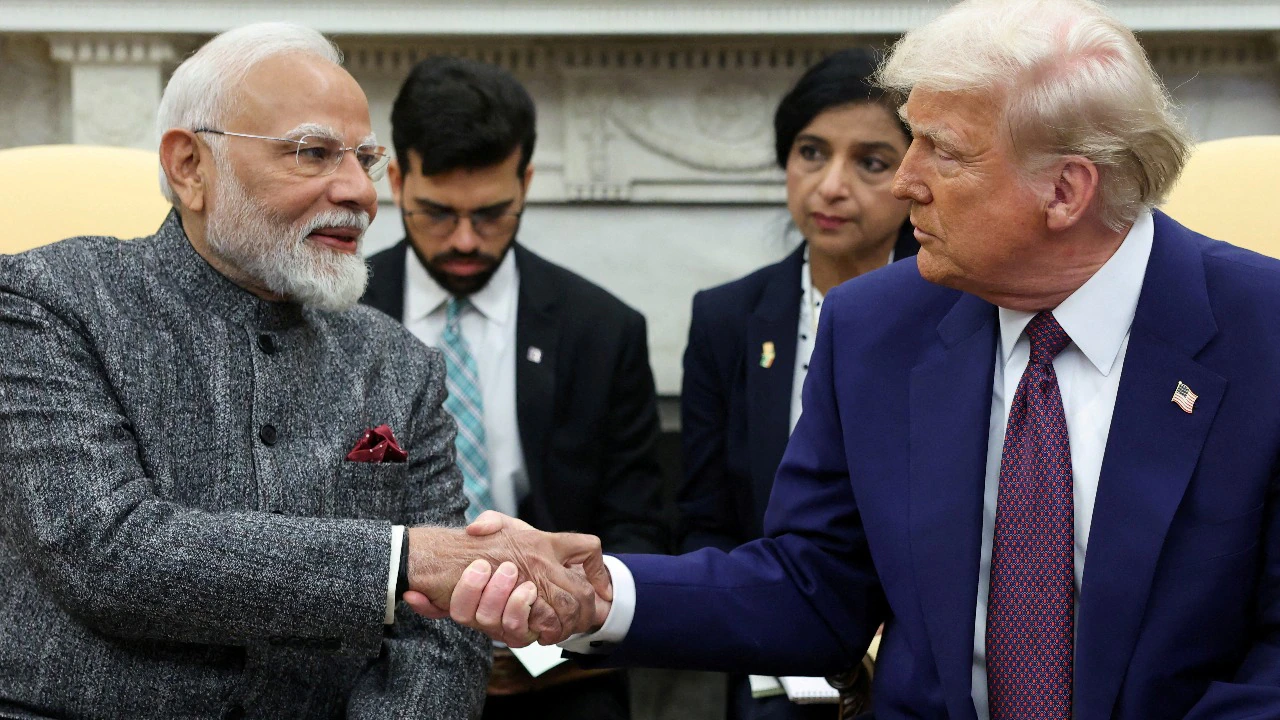
The global financial markets are once again witnessing significant turbulence following a major development in US trade policies. Recently, the US government, under President Donald Trump, signed an executive order that imposes an additional 25% tariff on Indian imports. This decision has sent shockwaves through the stock markets, igniting fears of a trade war that could impact global economic stability.
The move was officially announced and tracked closely by financial news outlets such as CNBC and TV18, emphasizing the gravity of the situation. The US government’s such measures tend to influence not just bilateral trade but also investor sentiment worldwide, causing ripple effects on stock indices, currencies, and commodity prices.
Background: Why Did the US Decide to Impose Tariffs?
While the detailed reasons behind the tariff imposition are complex, some key factors include:
- Trade Deficit Concerns: The US has been concerned about its trade deficit with India, which has been escalating over recent years, leading to calls for corrective policies.
- Protection of Domestic Industries: Certain sectors, including technology, pharmaceuticals, and agricultural exports, have advocated for tariffs to safeguard domestic producers from perceived unfair competition.
- Strategic and Political Factors: Diplomatic tensions and negotiations often influence trade policies, and tariffs are sometimes used as leverage in broader negotiations.
In this context, Trump’s administration has been increasingly aggressive in implementing tariffs on various nations, aiming to renegotiate trade terms or penalize specific concerns.
The Immediate Market Reaction: Stocks Fluctuate Amid Uncertainty
Stock Market LIVE Updates
Following the announcement, the US stock markets experienced volatile trading sessions. Investors showed mixed reactions—some sold off holdings amid fears of escalation, while others speculated on long-term strategic gains for domestic industries.
According to CNBC TV18, the key stock indices like the Dow Jones Industrial Average, S&P 500, and Nasdaq saw significant swings in intra-day trading. The uncertainty led to a cautious trading environment, with traders closely monitoring news flow and political developments.
For instance, the Dow Jones declined by a few hundred points initially, reflecting investor anxiety. However, some sectors such as technology and defense showed resilience, anticipating possible government benefits or new tariffs on competing foreign markets.
Impact on Indian Economy and Global Markets
Effects on India
India, being a major beneficiary of US imports in sectors like pharmaceuticals, textiles, and information technology, faced the prospect of increased costs and reduced export opportunities. The tariff hike could lead to:
- Higher prices for Indian exports, potentially reducing their competitiveness in the US market.
- Pressure on Indian currency (INR) as investors react to increased trade tensions, possibly leading to depreciation.
- Potential retaliation from India, which might impose tariffs or non-tariff barriers on US goods, escalating the trade conflict.
Global Market Ramifications
The turmoil extends beyond US and India, affecting global trade dynamics. Investors worldwide are bracing for:
- Disruption in supply chains due to increased tariffs on raw materials and intermediate goods.
- Shifts in currency markets as traders seek safe-haven assets.
- Increased market volatility across Asia, Europe, and emerging markets.
Expert Opinions and Future Outlook
Market analysts warn that the tariff imposition could be a part of broader protectionist policies that threaten to destabilize global trade agreements. Some experts suggest that while the tariffs might pressure India to negotiate more favorably with the US, they could also prompt retaliation, leading to a trade war with far-reaching consequences.
On the other hand, policymakers are considering measures to mitigate adverse effects. These include diplomatic talks, potential exemptions, or phased implementations of tariffs to reduce immediate shocks.
Potential Long-term Impacts
- Rebalancing of trade flows if negotiations succeed, potentially leading to new trade agreements.
- Shift in corporate strategies as companies may diversify supply chains or seek alternative markets.
- Policy shifts in both the US and India to adapt to the new trade environment.
Conclusion: Navigating Through Uncertainty
The decision by President Trump to impose additional tariffs on India marks a pivotal moment in US trade policy, triggering significant market reactions and setting a tone of increased protectionism. While the immediate impact has been market volatility and heightened uncertainty, the long-term effects will depend largely on diplomatic negotiations and strategic responses from both nations.
Investors and policymakers alike will need to stay vigilant, monitor new developments, and adapt to the changing trade landscape to mitigate risks and capitalize on emerging opportunities.
As the situation unfolds, one thing remains clear: global markets are sensitive to trade policy shifts, and immediate reactions are only the beginning of a potentially sustained period of adjustment.
Final Thoughts
The road ahead will require careful negotiation and strategic planning. Countries, corporations, and investors must remain flexible to navigate the evolving trade environment effectively.
Stay tuned for continuous updates on this developing story, as it will undoubtedly shape economic policies and market trajectories for months to come.
For more updated news please keep visiting Prime News World.








